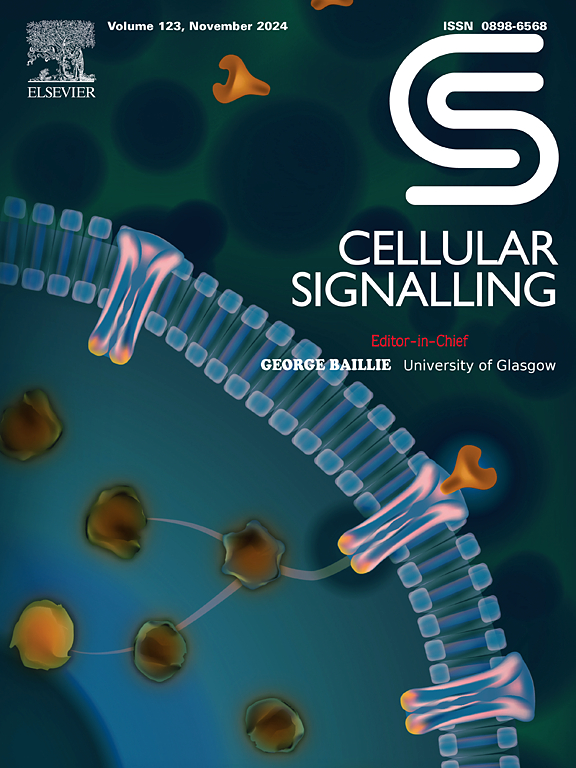HnRNPR promotes non-small cell lung cancer progression by protecting XB130 mRNA from XRN1- and DIS3L2-mediated degradation
IF 4.4
2区 生物学
Q2 CELL BIOLOGY
引用次数: 0
Abstract
The adaptor protein XB130 is critically implicated in tumorigenesis. However, the mechanisms regulating its expression in tumors are not well understood. Our previous studies have identified hnRNPR as a potential binding protein of XB130 3’UTR in non-small cell lung cancer (NSCLC). This study aimed to clarify hnRNPR's role in NSCLC progression and its specific mechanisms regulating XB130 expression. The expression of hnRNPR in NSCLC and normal tissues was assessed using NSCLC tissue microarray and the TCGA database. Subsequently, in vitro and in vivo experiments were conducted to investigate the impact of hnRNPR on NSCLC cell proliferation and epithelial-mesenchymal transition (EMT) by modulating XB130 expression. The underlying molecular mechanisms of hnRNPR regulating XB130 expression were explored utilizing a range of molecular biology techniques including Western blotting, Real-time quantitative PCR, Immunohistochemistry, Dual-luciferase reporter assay, RNA pull-down assay, and RNA immunoprecipitation. We identified the overexpression of hnRNPR in NSCLC, with heightened hnRNPR levels significantly associated with poor prognosis in patients with lung adenocarcinoma. Functionally, hnRNPR overexpression promoted NSCLC cell proliferation and EMT and activated the Akt signaling pathway. Mechanistically, hnRNPR protected XB130 mRNA from XRN1- and DIS3L2-mediated degradation by binding to specific regions within XB130 3’UTR, consequently elevating XB130 expression. Lastly, XB130 overexpression counteracted the effects of hnRNPR silencing on NSCLC cells. Overall, our study unveils the potential of targeting the hnRNPR/XB130 axis as a promising therapeutic strategy for NSCLC.
HnRNPR通过保护XB130 mRNA免受XRN1和dis3l2介导的降解而促进非小细胞肺癌的进展
接头蛋白XB130在肿瘤发生中起关键作用。然而,调控其在肿瘤中的表达的机制尚不清楚。我们之前的研究已经发现hnRNPR在非小细胞肺癌(NSCLC)中是XB130 3'UTR的潜在结合蛋白。本研究旨在阐明hnRNPR在NSCLC进展中的作用及其调控XB130表达的具体机制。利用非小细胞肺癌组织微阵列和TCGA数据库评估hnRNPR在非小细胞肺癌和正常组织中的表达。随后,通过体外和体内实验研究hnRNPR通过调节XB130表达对NSCLC细胞增殖和上皮间质转化(EMT)的影响。利用一系列分子生物学技术,包括Western blotting、Real-time定量PCR、免疫组织化学、双荧光素酶报告实验、RNA拉下实验和RNA免疫沉淀,探索了hnRNPR调节XB130表达的潜在分子机制。我们确定了hnRNPR在NSCLC中的过表达,并且hnRNPR水平升高与肺腺癌患者的不良预后显著相关。功能上,hnRNPR过表达促进NSCLC细胞增殖和EMT,激活Akt信号通路。从机制上讲,hnRNPR通过结合XB130 3'UTR内的特定区域来保护XB130 mRNA免受XRN1和dis3l2介导的降解,从而提高XB130的表达。最后,XB130过表达抵消了hnRNPR沉默对NSCLC细胞的影响。总之,我们的研究揭示了靶向hnRNPR/XB130轴作为一种有前景的非小细胞肺癌治疗策略的潜力。
本文章由计算机程序翻译,如有差异,请以英文原文为准。
求助全文
约1分钟内获得全文
求助全文
来源期刊

Cellular signalling
生物-细胞生物学
CiteScore
8.40
自引率
0.00%
发文量
250
审稿时长
27 days
期刊介绍:
Cellular Signalling publishes original research describing fundamental and clinical findings on the mechanisms, actions and structural components of cellular signalling systems in vitro and in vivo.
Cellular Signalling aims at full length research papers defining signalling systems ranging from microorganisms to cells, tissues and higher organisms.
 求助内容:
求助内容: 应助结果提醒方式:
应助结果提醒方式:


